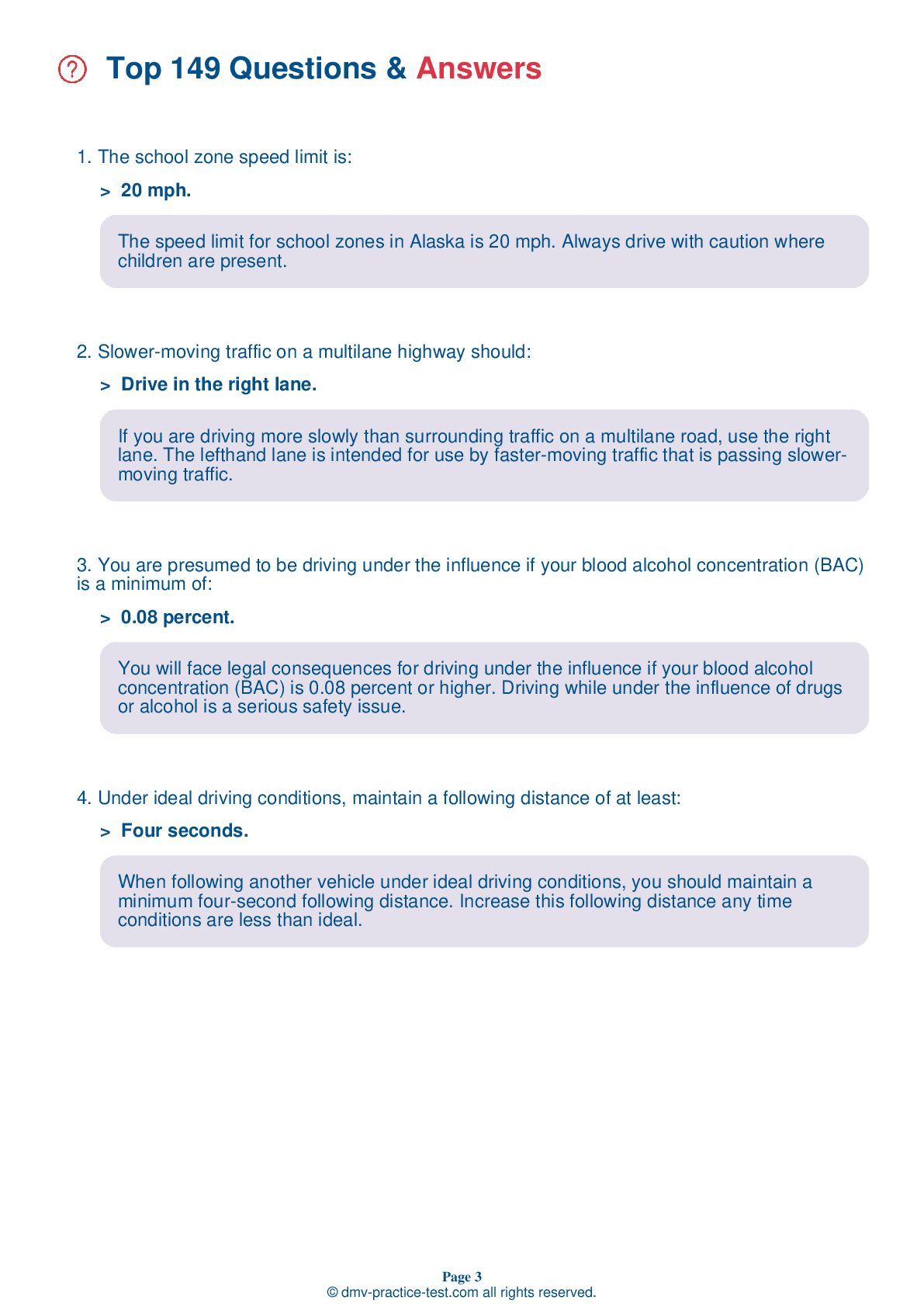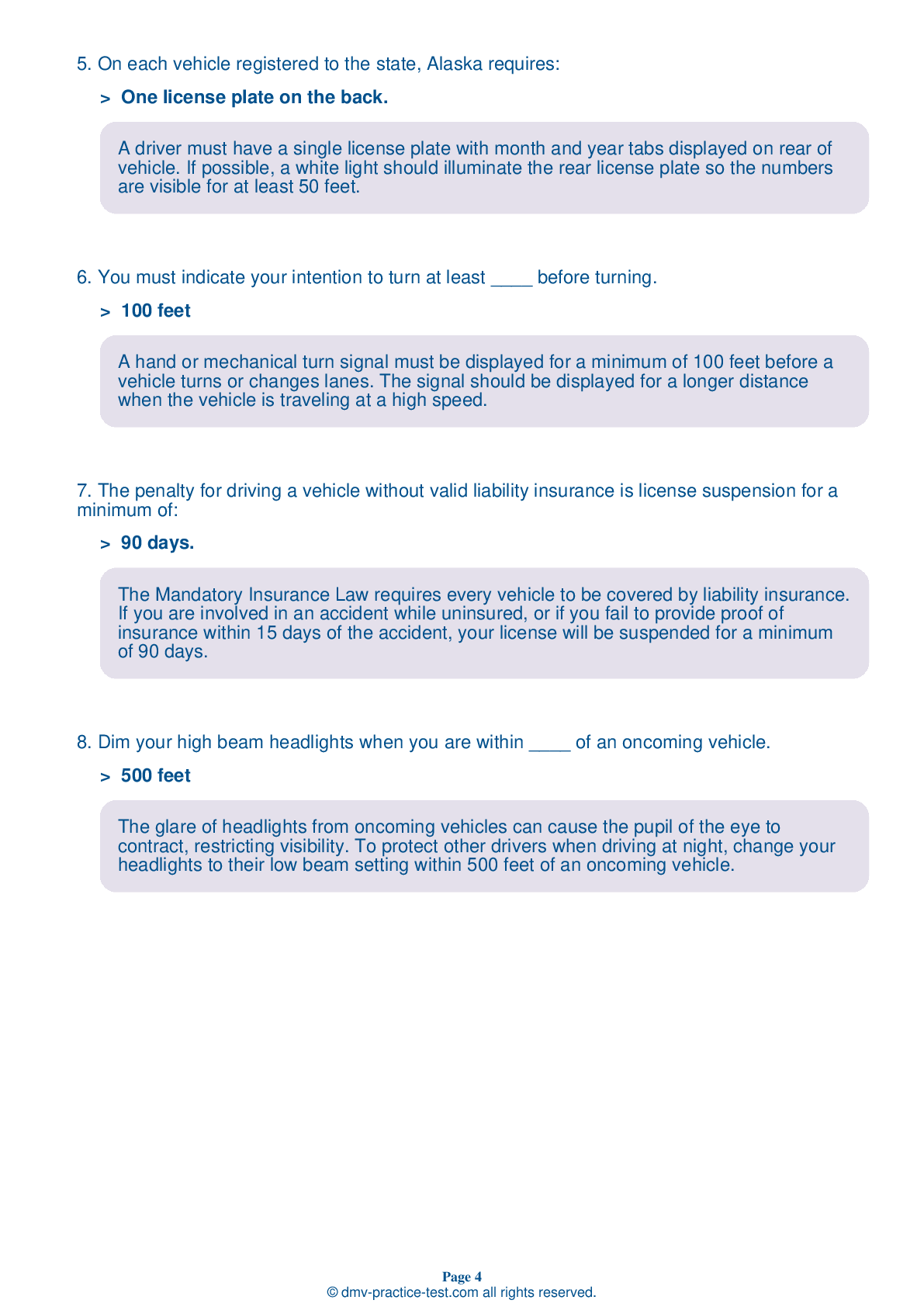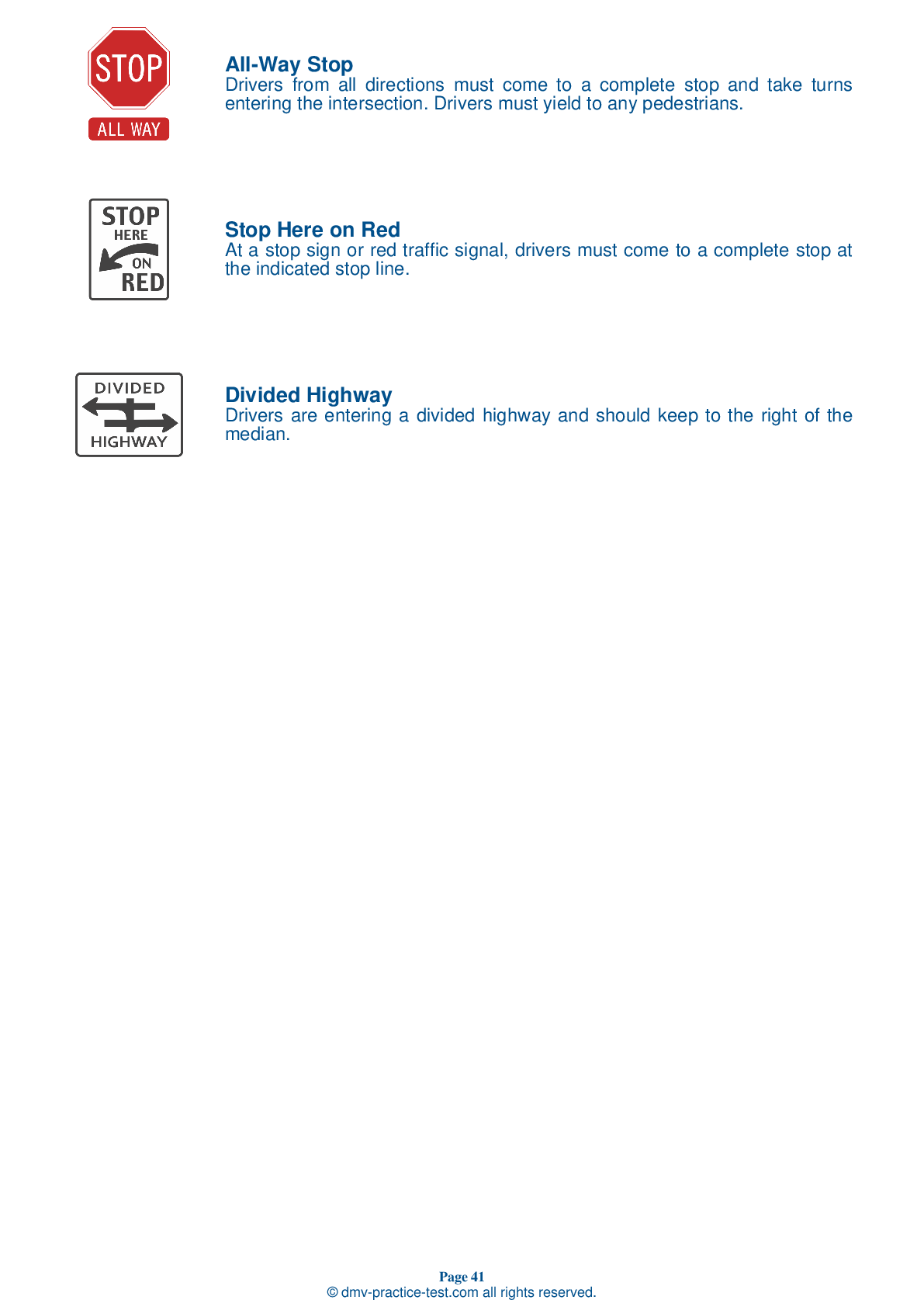FREE Alaska DMV Practice Test #4 Page 2 of 3
This Alaska DMV practise tests has just been updated for January 2025. It contains questions based on the most essential traffic signs and limitations from the Alaska Driver Handbook for 2025. Use actual questions that are very close (often identical!) to the DMV driving permit test and driver's licence exam to prepare for the DMV driving permit test and driver's licence exam.
To help you recall the topics, each practise test question includes a suggestion and explanation. The written component of the official DMV test will include questions about road rules, traffic signs, and driving statutes, as well as information from the Driver Handbook.
To get the required passing mark, you must correctly answer 16 out of 20 questions. Take our DMV practise exam to help you prepare for your Alaska instruction permit or driver's licence.
The DMV exam is available in multiple languages.
Using any form of testing aid will result in an automatic failure, and the DMV may take further action against your driver's licence, so don't do it.
7 . On each vehicle registered to the state, Alaska requires:
A driver must have a license plate on both the front and rear of their vehicle. If possible, a white light should illuminate the rear license plate so the numbers are visible for at least 50 feet.
8 . Traffic signs and pavement markings:
Traffic flow is controlled by pavement markings, traffic islands, signals, and signs. These devices inform drivers of conditions on the roadway and help guide drivers safely to their destinations. You must always obey traffic signs, signals, and pavement markings.
9 . What color are pavement markings that separate traffic lanes moving in opposite direction?
Yellow lines are used in the center of the road to separate lanes of traffic moving in opposite directions.
10 . A red traffic signal light means that you must:
A red traffic light means that you must stop before entering the intersection. You must at any stop line and before entering any crosswalk.
11 . You are driving when your power steering stops working. You should:
If your power steering stops working, additional effort will be required to maintain steering control. Reduce your speed and pull off the roadway to stop in a safe area.
12 . While driving on a two-lane road without bicycle lanes, you encounter a bicyclist traveling in the same direction. What is the safest way to pass the bicyclist?
You should pass a bicyclist the same way you would pass any other vehicle, but not so fast or close to them that you throw debris in their face or blow them around with the draft of air from your vehicle. Allow at least 3 feet of space between your side mirror and the bicyclist, or at least 5 feet on higher speed roads or when there is a group of bicyclists. Honking unnecessarily may startle riders and make them more likely to crash.
13 . A flashing yellow traffic signal means:
When encountering a flashing yellow traffic signal at an intersection, reduce your speed and exercise caution. Yield to pedestrians and vehicles already within the intersection.
Need Car Insurance? No problem!
Compare the best rates in Alaska and find a personalized policy that meets your needs.
1. Are You Currently insured ?
2. Married ?
3. Do you own your Home?
4. Do you have more than 1 car ?
5. Have you or a Family Member Honorably Served in U.S. Military ?
6. Your Name
7. Age
8. Zip code
IMPORTANT REMINDER:Auto Insurance is Mandatory to drive in Alaska. Get covered before you hit the road to avoid any fines.
Ranked by best match



